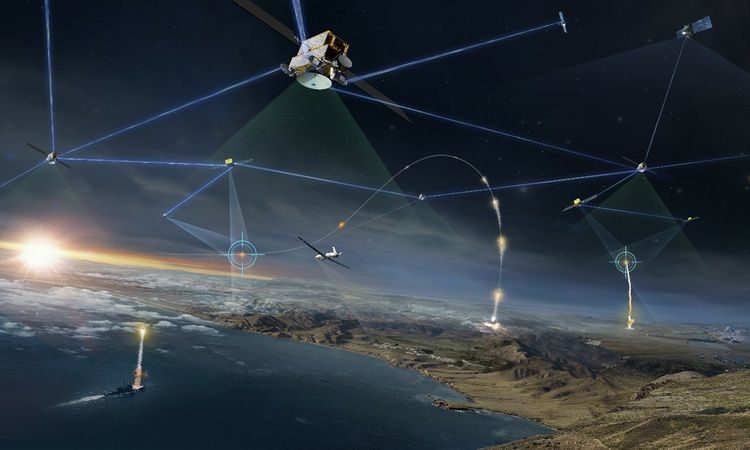The Space Development Agency has already awarded contracts for most of the satellites that will form the beginnings of its massive planned constellation in low-Earth orbit, and on May 26 the agency awarded a deal for the ground systems to go with it.
General Dynamics Mission Systems won the contract, worth up to $324 million, to establish the ground operations and integration segment of Tranche 1 of the National Defense Space Architecture (NDSA), the Pentagon announced.
As part of the deal, General Dynamics and its partners will establish two operations centers, one at Grand Forks Air Force Base, N.D., and one at Redstone Arsenal, Ala. It will also build 12 ground stations—eight for Ka-band frequencies, two for S-band, and four with optical communications, an SDA official told reporters.
SDA, which is scheduled to transition fully into the Space Force later this year, has already awarded contracts for more than 120 satellites and is looking to add still more to its first tranche of the constellation—Lockheed Martin, Northrop Grumman, and York Space Systems have all earned SDA contracts to design satellites, and more are to come.
It will be up to General Dynamics to develop “a common ground architecture, which integrates base and ground segments from multiple vendors in multiple configurations and allows … mission operations in a mesh networking control,” the SDA official said.
The Space Development Agency’s strategy includes awarding contracts to multiple vendors and encouraging unsuccessful bidders to try again for later tranches, as the agency looks to build an open satellite constellation without so-called “vendor lock.”
That approach, however, means that having a ground segment operator that can integrate all the different contractors into one system “really is the most critical element of Tranche 1,” the SDA official said, adding that it also “carries the highest risk for the overall Tranche 1 successful performance.”
That’s because “without a ground segment, our space vehicles orbiting around the Earth can’t really do what we need them to do,” the official said. “They can do things autonomously, but really in order to make things work as a complete network, as a complete enterprise, you really do need the ground segments to manage the enterprise and the mesh and the control of the space layer.”
Just as SDA has tried to avoid “vendor lock” with its satellite awards, it is also trying to ensure the O&I ground segment doesn’t get stuck with one contractor. To do so, the contract award details a strategy that “incorporates open architecture concepts and develops interfaces that can be communicated and standardized, so that the integration with all the different [space vehicle] vendors as they come on board can feed into the overarching ground networking enterprise,” the official said.
All told, SDA is estimating that Tranche 1 of the NDSA will consist of 166 satellites—126 for the Transport layer, dedicated to data and communications that will serve as the “backbone” for joint all-domain command and control; 28 for the Tracking layer, which will detect, identify, and track hypersonic weapons and other advanced missile threats; and 18 for the Tranche 1 Demonstration and Experimentation System, which SDA says will augment the Transport Layer “with demonstration and experimental capability.”
The first Tranche 1 satellites in the Transport layer are slated for launch no later than September 2024, with the first Tracking layer satellites currently scheduled for April 2025. But first, SDA plans to launch “Tranche 0,” a relatively small collection of 28 satellites, no later than 2023. Tranche 0 will include 20 satellites in the Transport layer, 10 each from Lockheed and York, and eight in the Tracking layer, with L3Harris and SpaceX supplying four each.
